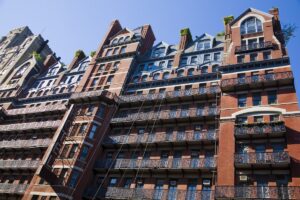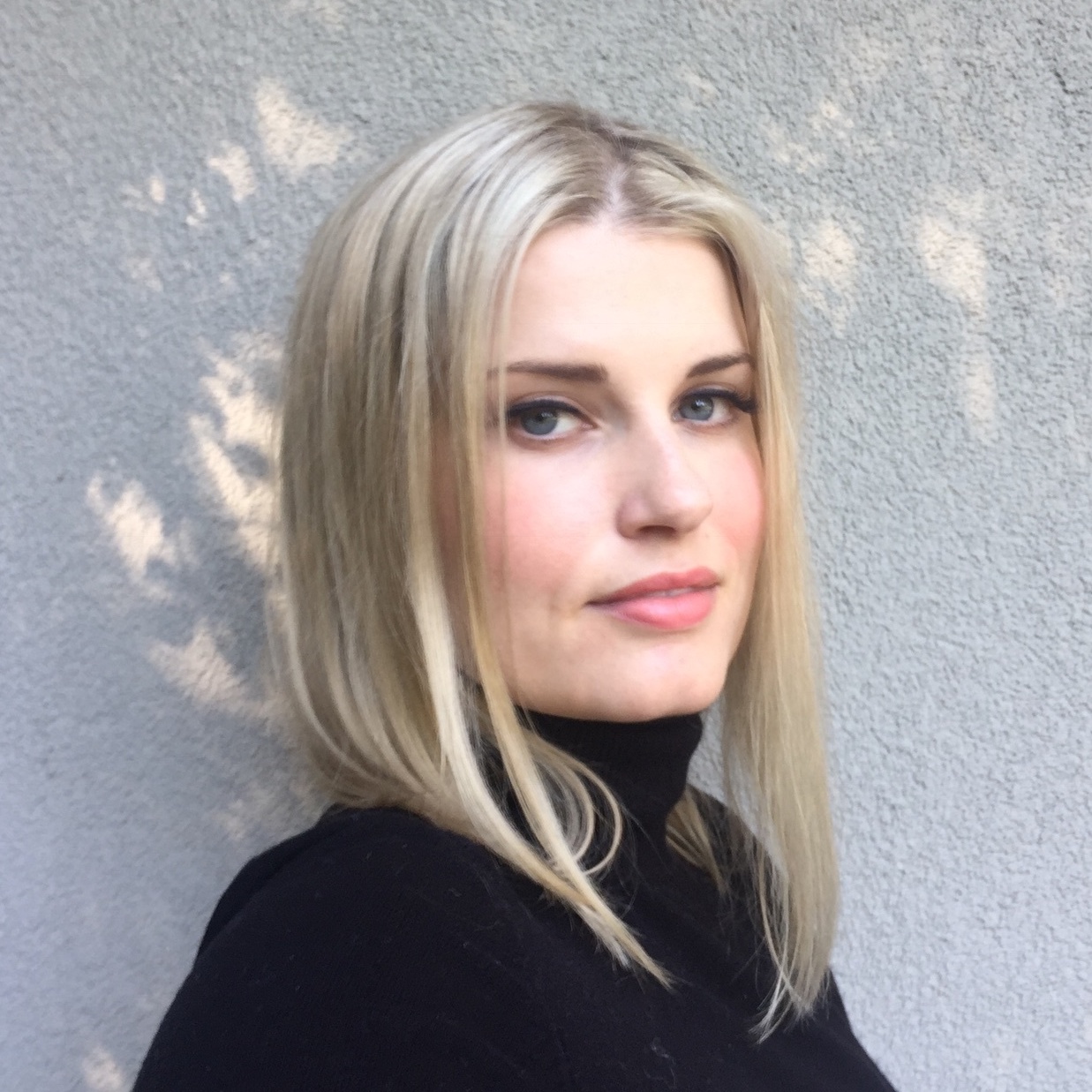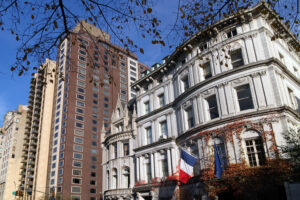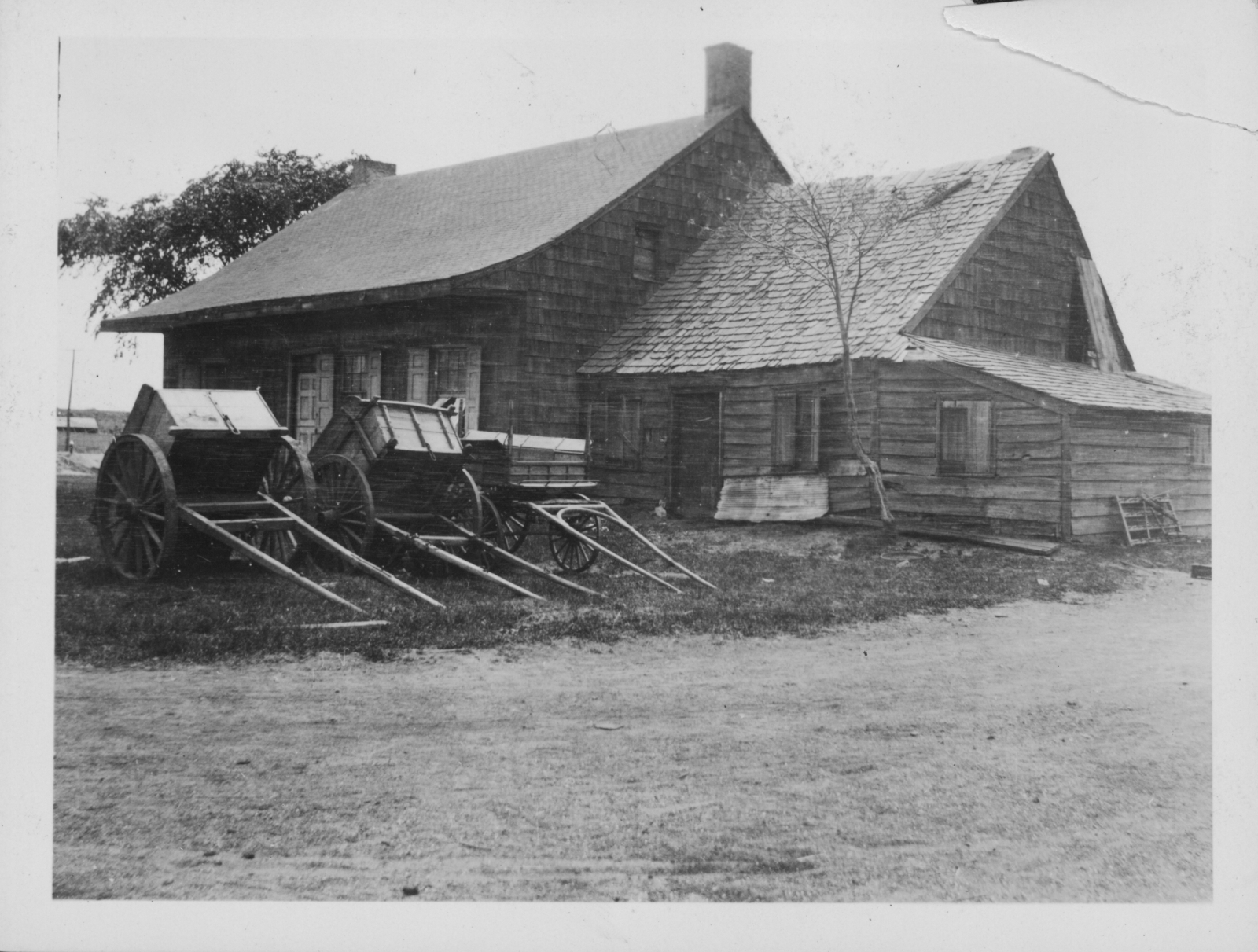
The Wyckoff House is the oldest building in NYC. Here’s how it looked in 1922 — 270 years after it was built. (The New York Historical Society/Getty Images)
You might think the oldest building in New York City would be in Manhattan. Not so. That title is held by a farmhouse in East Flatbush, Brooklyn, built all the way back in 1652. Located on 1.5 acres between busy Clarendon Road and Ditmas Avenue, the Wyckoff House is now frozen in time among modern shops, restaurants, and tire repair centers. Its setting seems an odd place to find the oldest surviving structure in NYC.
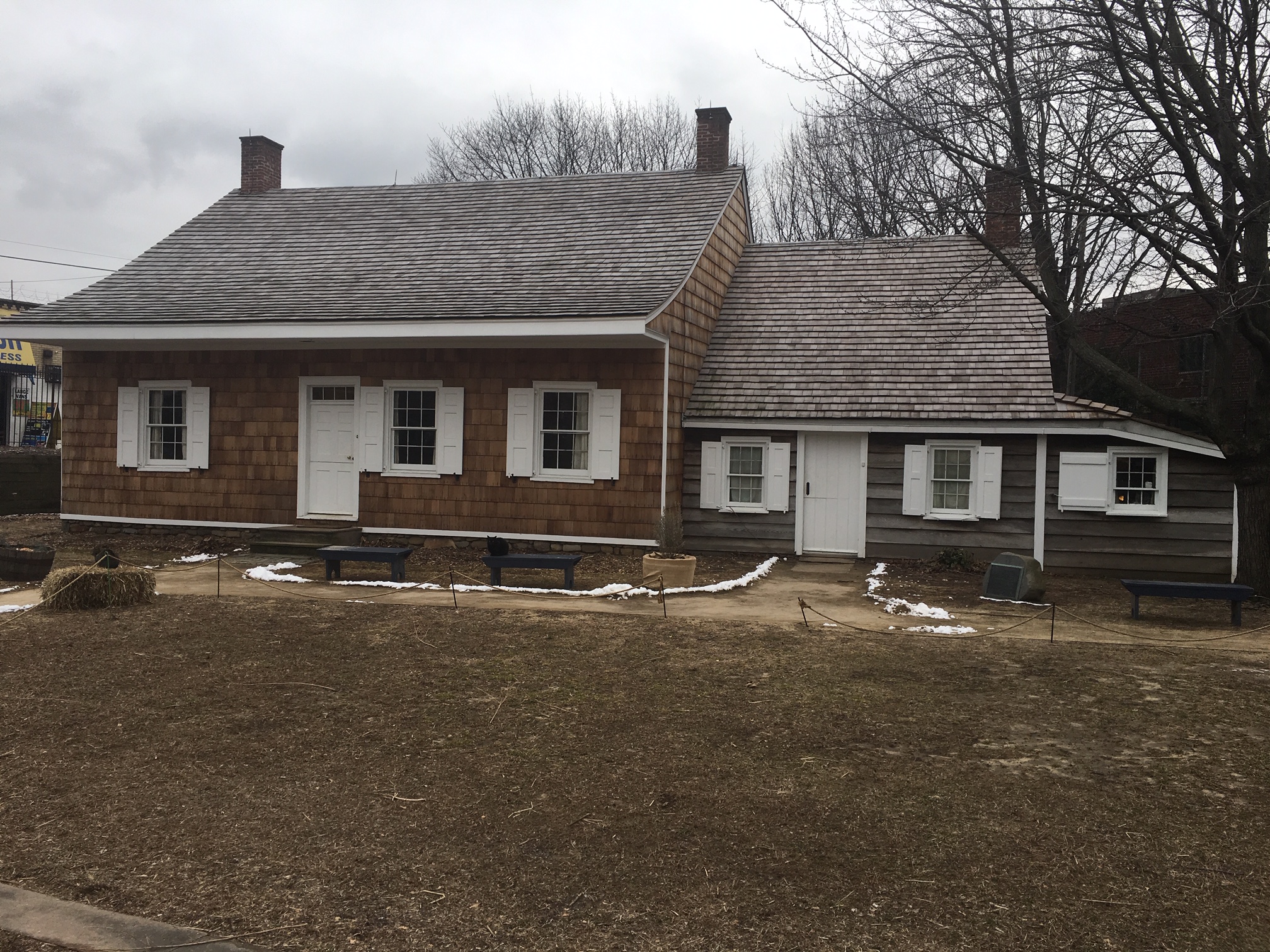
The Wyckoff House in Brooklyn as it looks today.
The Wyckoff Home Was Small, Like NYC Apartments Today
Stepping into the cramped original section of the house is like being transported in time. It’s dark, dusty and a bit stuffy — all things one would expect from a home several centuries old. From the street, the home looks out of place, but once inside it’s easy to imagine the surrounding area as nothing more than farmland. Prior to the arrival of the Dutch, the lands belonged to the Lenape.
Built by Pieter Claesen in 1652, the cottage consisted of just one room with a deep, Dutch-style open hearth. The home has undergone a few upgrades as generations of Wyckoffs raised their families on the property. The first structure of the home has wood floors now, but in the beginning there was just a packed-earth floor. The windows didn’t even have glass.
Farming was a hard life, and the family made due with the basics. It wasn’t until 1730 that Claesen’s grandchildren built an addition to the home and a cellar. Having a cellar was a big accomplishment, because it meant the family was actually producing enough food to store for later.
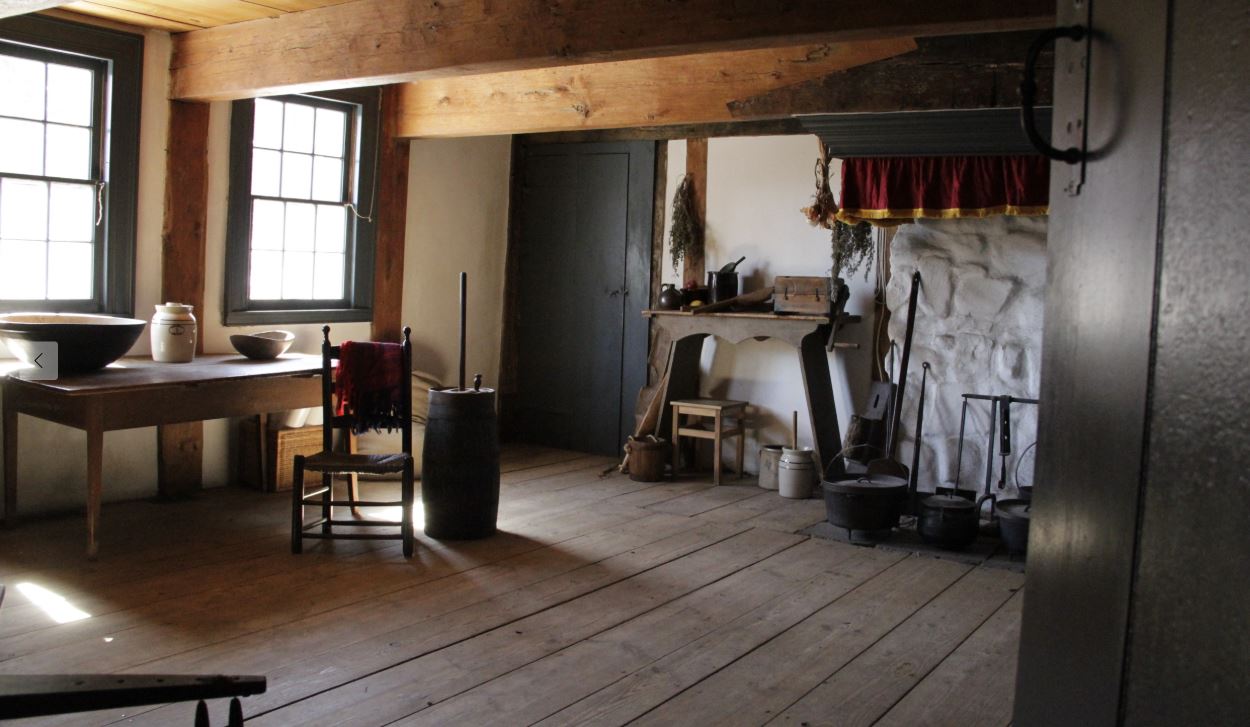
Close quarters: the interior of the original Wyckoff house cottage. (Wyckoff House Museum)
As the Wyckoff’s station in life improved, they’d add to the structure. In 1750, a parlor room was added for entertaining. While not extravagant, simply having an extra room for hosting instead of a just a utilitarian space was a big deal. In total the home now has six rooms, three fireplaces, and an attic.
About Pieter Claesen
Pieter Claesen came to America in 1632 at the age of 12, as an indentured servant working in present-day Albany. Back then, the place was the Dutch colony of New Netherland. The capital, New Amsterdam, would later become New York City. Claesen was from Norden, an area that is now in Germany, and he spoke Frisian. The language is still spoken in coastal areas of Denmark and parts of the Netherlands.
After serving a six-year contract on the estate of a fellow Frisian, Claesen was free to go, and he became a tenant farmer himself. In 1652 Claesen acquired land from the Dutch West India Company in Nieuw Amserfoort, also known as the Flatlands, which would eventually become Brooklyn.
He and his Dutch wife, Grietje van Nes, went on to have 11 children. All of them survived — no small feat for the period — but imagine 13 people living in one room. You’ll never complain about your roommates again.
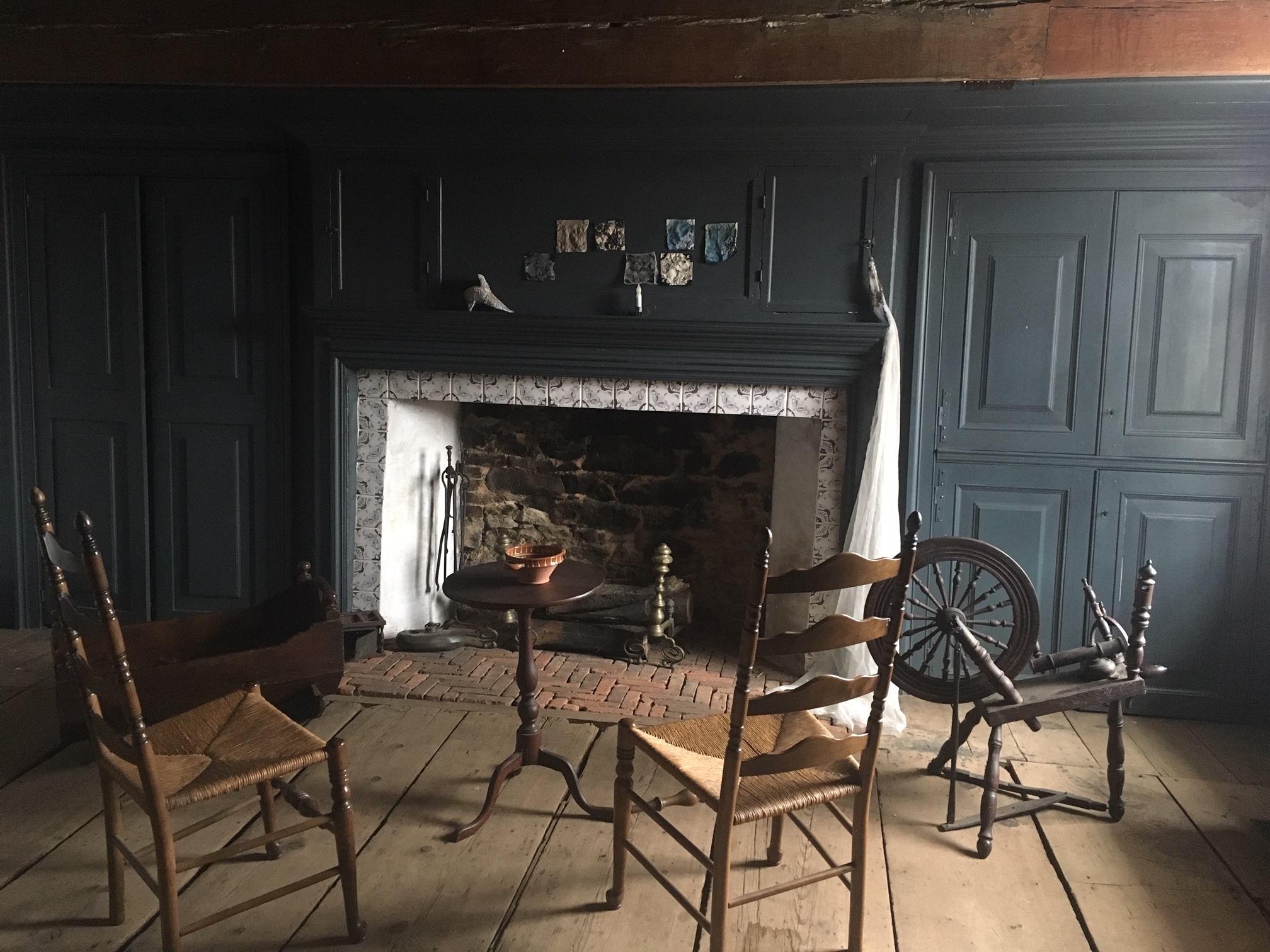
The addition of a living room was a sign of success.
From Claesen to Wyckoff
When the British took over New Amsterdam, residents were forced to abandon the patronymic system — in which their father’s name was taken as their second name — and instead adopt a surname that could be passed down. (Claesen translates to “son of Claes,” short for Nicholas.) Tasked with finding a new surname, Pieter chose Wyckoff (originally spelled Wykhof), likely after a farm near his birth home in Germany where his parents may have been tenants.
Eight generations of Wyckoffs occupied the home until it was sold in 1901. Claesen himself became a prominent figure in the community, and played a role in establishing the Flatlands Dutch Reformed Church. The Wyckoff name has taken on a variety of spellings, but many Canadian and American Wyckoffs can still trace their heritage back to one of Pieter’s 11 children.
The First Building Designated a NYC Landmark
In 1965 the Wyckoff house became the first structure designated as a NYC landmark. After decades of disrepair and a fire, the home was carefully restored and reopened as a museum in 1982. Today the home is owned by the NYC Department of Parks and Recreation, and operated by the Wyckoff House & Association.
The Wyckoff House Museum and its dedicated staff hosts groups of students and families for events and tours, especially in warmer months. The house’s large garden is put to use for apprenticeship and volunteer farming programs that yield organic produce for locals. Today, this historic house provides a rare space for neighbors and visitors to commune and reconnect with Brooklyn’s agrarian past.
—
Hey, why not like StreetEasy on Facebook and follow @streeteasy on Instagram?






